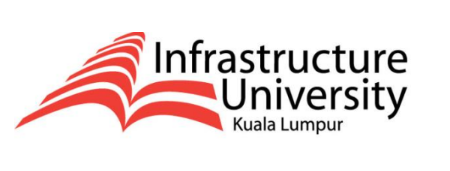Development Strategy for Child-Friendly Cities In Ponorogo Regency the Perspective of Muhammad Umer Chapra
DOI:
https://doi.org/10.21154/elbarka.v5i2.5136Keywords:
Strategy, Development, Child-Friendly CitiesAbstract
Introduction/main objective: study this review existing strategies applied in the development of Child-Friendly Cities or Kota Layak Anak (KLA) in the Regency Ponorogo with Muhammad Umer's approach Chapra. Background Problems:Construction of KLA in Ponorogo Regency still has not yet can be embodied because six KLA stages have yet to be implemented in a manner whole a manner maximum. Realization of KLA in the District Ponorogo Becomes interesting research with M. Umer's perspective Chapra because as a figure economist Muslim he has to criticize theory economy conventional (which is also implemented in Ponorogo ), but he is not anti-starch with the theory. Novelty: with the study implementation of KLA in the District Ponorogo through M. Umer's perspective Chapra expected there is a new strategic solution that combines existing development _ conducted with applying the 5 principles of development and 3 principles of the life of M. Umer Chapra. Research Methods: Types study this is a study field with a qualitative approach, while Engineering data collection includes an interview, observation, and documentation. Finding/Results: Based on the results of research already _ carried out, the application of KLA in the District Ponorogo is not yet can be held in a manner maximum because exists various constraints. Conclusion: strategy of the government in realizing the development of KLA uses two approaches, namely top-down and bottom-up. The cause of the KLA not being able to materialize is due to the heavy tractability of the problems, the ability of statute to structure implementation, and variables nonstatutory variables affecting implementation beneficiaries of this program do not yet have a big commitment in realizing this program. Those problems no will appear if in implementation government added five principles of development such as providing benefits to the community, reducing the concentration of wealth, realigning the economic/financial sector, making strategic program plans, as well as apply principles tauhid, khilafah, dan ’adalah.
References
Ahmad Musthafa Azhom, (2021). Realizing a Child Friendly City as Protection towards Children in Indonesia, Constitutionale, 2(2) 89-102
Ariyadi, Fahriza. (2015). Peranan Badan Keluarga Berencana Pemberdayaan Perempuan dan Perlindungan Anak (BKBP3A) dalam Mensosialisasikan Program Layak Anak (KLA) di Tenggarong. EJournal Ilmu Komunikasi, 3.
Chapra, Umer. (2000). Islam dan Tantangan Ekonomi (Vol. 1). Gema Insani Press.
DINSOS & PPA. (2020). PROFIL ANAK KABUPATEN PONOROGO. DINSOS & PPA.
Fanny TanuwijayaFiska, Maulidian Nugroho (2020), Child-Friendly Cities and Districts As Human Rights Protection in Indonesia’s Decentralization Context, Indonesian Journal of Law and Society, 1(2) 163
Fitriani, Riri. (2014). Street Child and Child-Friendly City: A Study of Jambi City Goverment in Protecting Street Child to be Child-Friendly City (KLA). JMP, 01.
Hanani, G. Q., & Kurniaty, V. (2022). RELEVANSI PEMIKIRAN EKONOMI MENURUT UMER CHAPRA DAN KONSEP UANG MENURUT AL-GHAZALI. Eqien - Jurnal Ekonomi dan Bisnis, 9(2), Article 2. https://doi.org/10.34308/eqien.v9i2.420
Haq, Muhammad. (2016). Quo Vadis Prtisipasi Masyarakat dalam Kebijakan Kabupaten Layak Anak (KLA) Sleman. Jurnal Aplikasi Ilmu-Ilmu Agama, 16.
moleong, lexy. (2000). Metodologi Penelitian Kualitatif. PT. Re,aja REosda Karya.
Mulyadi, D. (2016). PEMIKIRAN EKONOMI ISLAM UMER CHAPRA (Studi Analisi Terhadap Sistem Ekonomi Kapitalisme, Sosialisme, dan Negara Sejahtera). ADLIYA: Jurnal Hukum dan Kemanusiaan, 10(2), Article 2. https://doi.org/10.15575/adliya.v10i2.5153
PEMIKIRAN EKONOMI ISLAM M. UMER CHAPRA | Inayati | Profetika: Jurnal Studi Islam. (n.d.). Retrieved October 23, 2022, from https://webcache.googleusercontent.com/search?q=cache:1m0j9Ilpc-AJ:https://journals.ums.ac.id/index.php/profetika/article/view/2015&cd=2&hl=id&ct=clnk&gl=id
Permen-pppa-no-8-thn-2014-ttg-kebijakan-sekolah-ramah-anak-1.pdf. (n.d.). Retrieved November 2, 2022, from https://sekolahramahanak.files.wordpress.com/2013/11/permen-pppa-no-8-thn-2014-ttg-kebijakan-sekolah-ramah-anak-1.pdf
PERPRES No. 25 Tahun 2021 tentang Kebijakan Kabupaten/Kota Layak Anak [JDIH BPK RI]. (n.d.). Retrieved October 23, 2022, from https://peraturan.bpk.go.id/Home/Details/165693/perpres-no-25-tahun-2021
Rongedzayi Fambasayi. (2021), Leveraging City-level Climate Change Law and Policy for the Protection of Children, International Journal of Children's Rights, Vol 29 No 4 872”“896.
Rudolf Anthony A. Lacerna, Jeffrey Rosario Ancheta. (2021). State of communicating children protection in Taguig city, Philippines: Basis for a sustainable development plan, Youth Voice Journal, 4 1-30
Said, M. (2017). Implementasi Kota Layak Anak di Kabupaten Demak. Jurnal Refleksi Edukatika, 8.
sjahrizal. (2014). Perencanaan Pembangunan Daeran dalam Era Otonomi Daerah. PT. Raja Grafinda Persada.
UU No. 35 Tahun 2014 tentang Perubahan atas Undang-Undang Nomor 23 Tahun 2002 Tentang Perlindungan Anak [JDIH BPK RI]. (n.d.). Retrieved October 28, 2022, from https://peraturan.bpk.go.id/Home/Details/38723/uu-no-35-tahun-2014
Yafiz, M. (2019). Internalisasi Maqâshid al-Syarî’ah dalam Ekonomi Menurut M. Umer Chapra. AHKAM : Jurnal Ilmu Syariah, 15(1), Article 1. https://journal.uinjkt.ac.id/index.php/ahkam/article/view/2853
Downloads
Published
Issue
Section
License
Copyright (c) 2025 Ridho Rokamah, Rif’ah Roihanah, Abdul Mun’im, Chokchai Wongtanee

This work is licensed under a Creative Commons Attribution-NonCommercial 4.0 International License.
El-Barka: Journal of Islamic Economics and Business allow the author(s) to hold the copyright without restrictions and allow the author(s) to retain publishing rights without restrictions, also the owner of the commercial rights to the article is the author.





